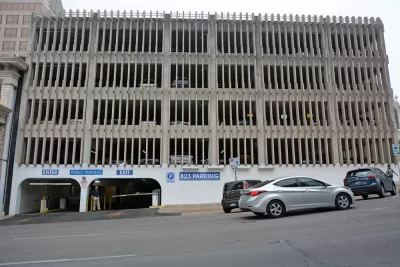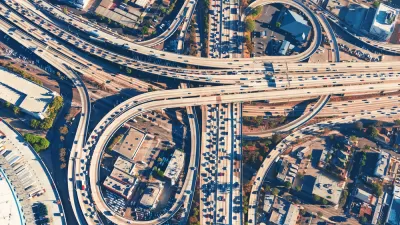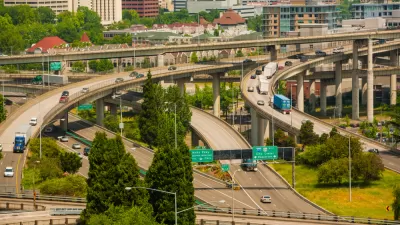“We are on a highway to climate hell with our foot on the accelerator.”

The United Nations published the “Emissions Gap Report 2022” at the end of October, once again calling attention to the vast differences between the changes necessary to prevent the worst effects of climate change. In the United States—much of the remaining gap between where we are with emissions and where we need to be is a direct consequence of planning decisions. It’s the car-centric planning—and United Nations Secretary General António Guterres even went so far as to deploy a tongue-in-cheek metaphor to make a point while announcing the report, saying “We are on a highway to climate hell with our foot on the accelerator.”
Bill Pugh provides an in-depth description of the new report in a guest contribution for Greater Greater Washington, focusing first on the prioritization list for greenhouse gas emission reductions included in the list. Issues of transportation and land use appear early and often. The most important actions for the transportation sector to take, according to the report are to 1) integrate land use and transportation planning to prioritize public transit over private automobiles, 2) investment in projects and programs to make high capacity, low-carbon transportation cheaper and easier, and 3) complete the transmission to zero-emission power for vehicles of all kinds.
According to Pugh, the nation is poised to make a real choice about whether it gets to work immediately on these needed shifts given the huge influx of funding from the Infrastructure Investment and Jobs Act and the Inflation Reduction Act. The Greater Washington, D.C. area has two opportunities to make contributions to the effort, according to Pugh: the Visualize 2045 long-range transportation plan for the region and the TransAction long-range plan for the Northern Virginia Transportation Authority. Both plans include billions for road funding and would double down on the GHG emitting status quo, according to Pugh.
“This is an opportunity for residents of suburban MD, DC, and Northern VA to demand that their local officials prioritize climate and make necessary changes,” writes Pugh.
FULL STORY: New UN climate report points to compact cities, moving people not just electric cars, to cut emissions

Alabama: Trump Terminates Settlements for Black Communities Harmed By Raw Sewage
Trump deemed the landmark civil rights agreement “illegal DEI and environmental justice policy.”

Planetizen Federal Action Tracker
A weekly monitor of how Trump’s orders and actions are impacting planners and planning in America.

Why Should We Subsidize Public Transportation?
Many public transit agencies face financial stress due to rising costs, declining fare revenue, and declining subsidies. Transit advocates must provide a strong business case for increasing public transit funding.

Understanding Road Diets
An explainer from Momentum highlights the advantages of reducing vehicle lanes in favor of more bike, transit, and pedestrian infrastructure.

New California Law Regulates Warehouse Pollution
A new law tightens building and emissions regulations for large distribution warehouses to mitigate air pollution and traffic in surrounding communities.

Phoenix Announces Opening Date for Light Rail Extension
The South Central extension will connect South Phoenix to downtown and other major hubs starting on June 7.
Urban Design for Planners 1: Software Tools
This six-course series explores essential urban design concepts using open source software and equips planners with the tools they need to participate fully in the urban design process.
Planning for Universal Design
Learn the tools for implementing Universal Design in planning regulations.
Caltrans
Smith Gee Studio
Institute for Housing and Urban Development Studies (IHS)
City of Grandview
Harvard GSD Executive Education
Toledo-Lucas County Plan Commissions
Salt Lake City
NYU Wagner Graduate School of Public Service





























